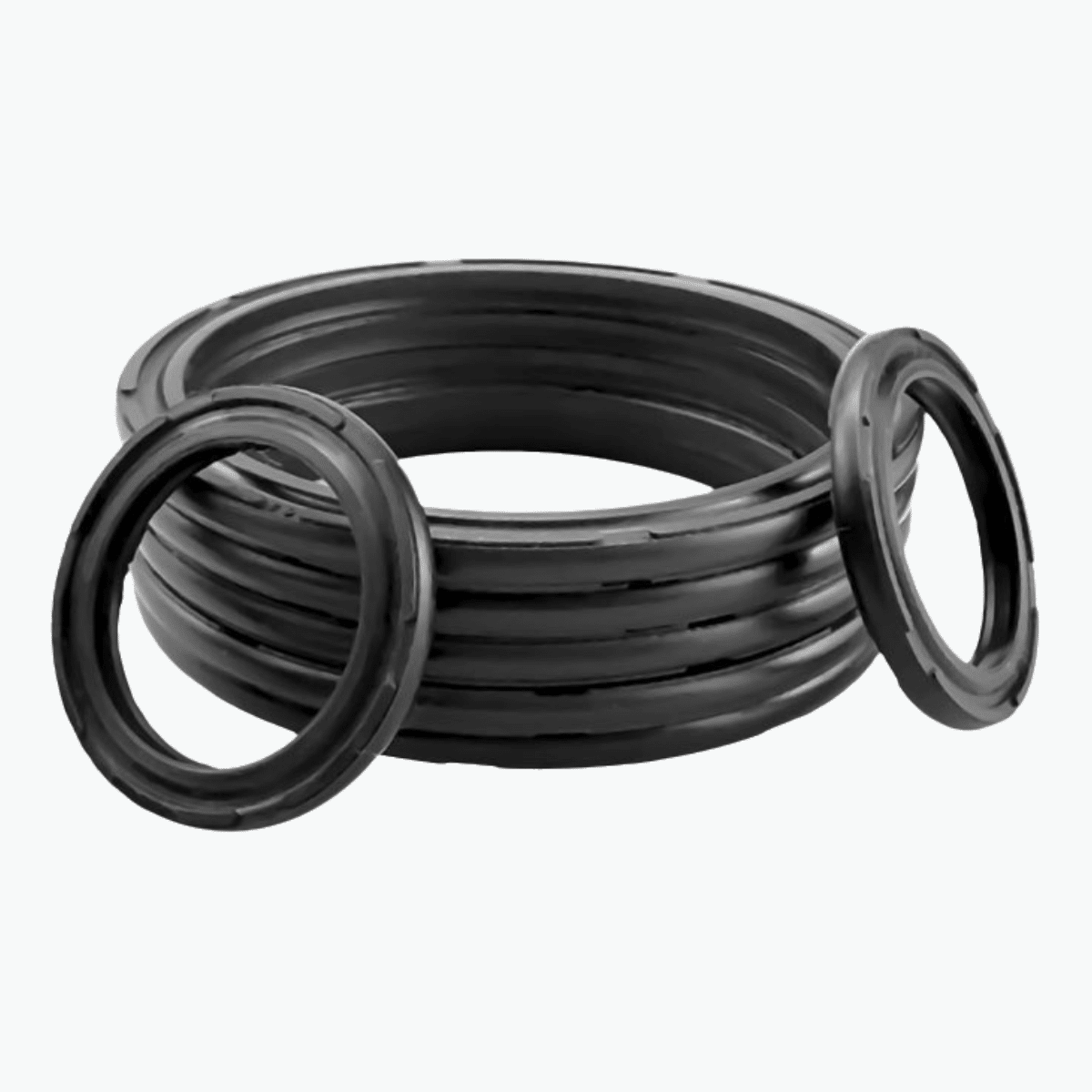Choosing the wrong seal can lead to air leaks and costly downtime.
A piston seal holds air pressure inside the cylinder; a rod seal prevents leaks along the rod. Both are critical but serve different purposes.
Here's how to select the right seal for your pneumatic application.
What’s the Main Difference Between a Piston Seal and a Rod Seal?
They operate in different areas of the cylinder.
Piŝtaj stampoj are installed in the bore to manage chamber pressure.
Stango-fokoj are placed at the cylinder head to stop air leakage along the moving rod.

They work together to maintain system efficiency. See the full breakdown in our pneumatic cylinder seal guide.
What Are the Key Functional Differences?
| Karakterizaĵo | Piŝta Sigelo | Stanga Sigelo |
|---|---|---|
| Loko | Ene de cilindra kalibro | Cylinder head |
| Funkcio | Seals pressure between chambers | Prevents external air leakage |
| Movement | Static or dynamic | Always dynamic |
| Failure symptoms | Blow-by, reduced stroke | Visible air leak, reduced pressure |
Consider adding polva viŝilo sigeloj for added protection in dirty environments.
Which Materials Are Best for Each Seal?

Plej bonaj Materialoj por Piŝtaj Sigeloj
| Materialo | Benefits | Uzokazo |
|---|---|---|
| NBR | Flexible and low cost | General air cylinders |
| TPU | Eluziĝo imuna | Automation systems |
| PTFE | Malalta frotado | Altrapidaj cilindroj |
| FKM | Heat and chemical resistance | Industrial cylinders |
More info: Piston Seal Types & Materials
Plej bonaj Materialoj por Stango-Sigeloj
| Materialo | Benefits | Uzokazo |
|---|---|---|
| NBR | Budget-friendly | Low-speed cylinders |
| TPU | Long service life | Heavy-duty cycles |
| FKM | Ekstremaj medioj | Chemical or high-temp use |
Explore options: Propra O-ring-fabrikisto
When Should You Use a Piston Seal vs. a Rod Seal?
Use a piston seal for internal chamber sealing.
Use a rod seal to seal around the moving piston rod.
In most cylinders, you’ll use both. For comparison: Piston vs Rod Seal
How to Prevent Common Seal Failures?
- Uzu PTFE aŭ TPU for high-speed or friction-prone systems
- Replace seals every 6–12 months
- Uzu bufrofokoj to absorb pressure spikes
Kie Aĉeti Altkvalitajn Piŝtajn kaj Stajn Sigelojn?
Ni provizas:
- Rod seals, piston seals, buffer & wiper seals
- Materialoj: NBR, TPU, FKM, PTFE
- OEM specs and custom orders
📩 Retpoŝto: [email protected]
📞 WhatsApp: +86 17622979498
Konkludo
Rod seals stop leaks along the rod; piston seals maintain pressure in the chamber. Use both for reliable pneumatic performance.
Browse Related Guides


